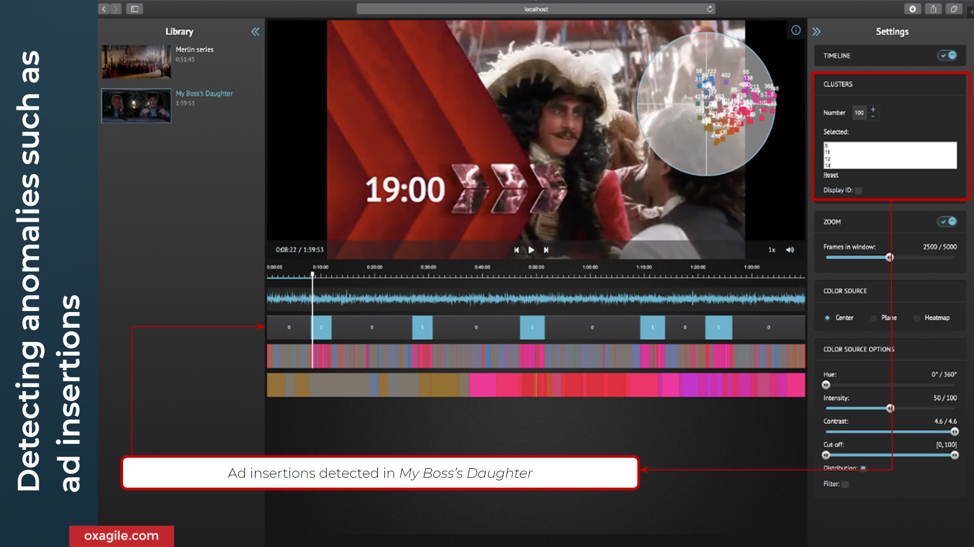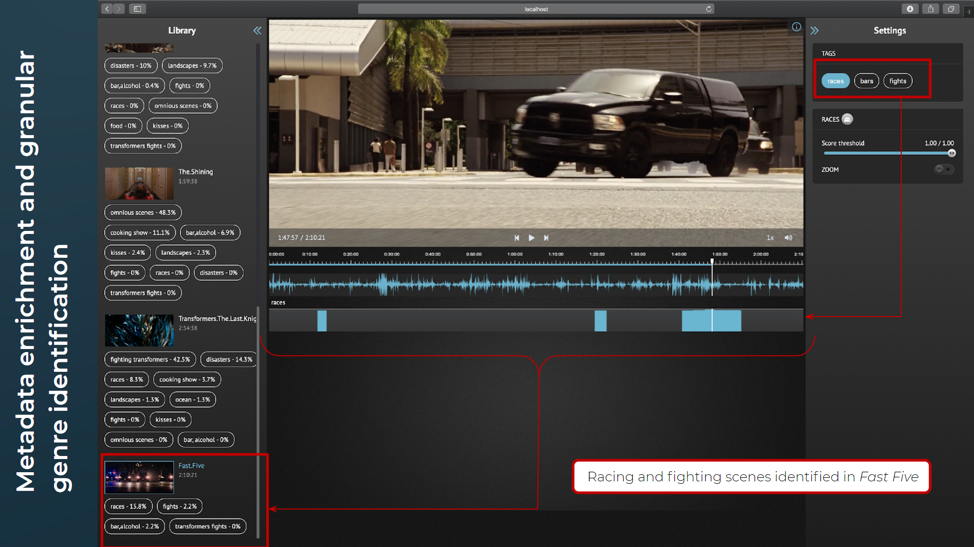

Updated January 2, 2025
Artificial intelligence and the OTT industry are a great match, as virtually every workflow around OTT — from content ingestion to QC to delivery — can be enhanced and accelerated by applying the capabilities of self-learning systems.
According to Tapjoy, OTT, which stands for “over-the-top,” refers to the productized use of streaming content for customers. This includes Netflix and other online content providers that have a streaming subscription service.
Building and maintaining a successful OTT platform is a daunting task that is exacerbated by fierce competition in the media industry. But as we know, competition sparks innovation.
Looking for a Artificial Intelligence agency?
Compare our list of top Artificial Intelligence companies near you
As one of the hottest technologies at the moment, and one that is becoming increasingly accessible for business use, artificial intelligence is finding new applications in OTT workflows.
Some of these applications are already yielding measurable results in terms of mitigating costs, engaging viewers, and increasing ROIs.
Let’s examine four complex, time-consuming tasks to illustrate the capabilities of AI technology in automating OTT operations. We took functioning real-world examples that we implemented on our client’s projects and demonstrated them with the images below
If your OTT platform is ad-supported, you understand the importance of streamlining all ad operations around content, including ad detection, removal, and placement.
What AI solutions can offer here is incredible speed and high precision of media content analysis at an unprecedented scale. Greater operational efficiency in this area translates into significant time and cost savings.
AI algorithms successfully detect and separate anomalies. In this case, AI detects anomalies in external ad materials from OTT entertainment content using a combination of markers such as changes in lighting, color scheme, the semantics of the scene.
When that process is complete, you can choose to replace the ads with new ones or remove them to seamlessly stitch the video back together. In the image below, ads are being detected using specific software.

The AI software, showcased in the image above, highlights specific sections of the video with different colors, making it easier for users to determine where the ads are placed.
On the other hand, deep content analysis fast-tracks meaningful ad placement.
The detailed semantic analysis of every frame yields rich metadata that you can use to locate the most relevant spots for ad insertion.
This helps you serve every ad in the right context, maximizing their effectiveness. For example, following an exciting chase scene with a car commercial.
Every frame of every video in your platform’s content library contains metadata — extra information about what and how is being shown, including the emotional state of the characters and the nature of their actions.
AI technologies can extract this information from any number of videos quickly and generate detailed descriptions for each.
The AI solution automatically assigns labels to every scene it analyzes, making it possible to visualize the structure of content and to group scenes by similarity.
This wealth of well-arranged metadata can be leveraged in a number of critical OTT workflows, such as content discovery, orchestration, and post-processing.
Imagine having the ability to automatically generate highlights and trailers from available footage, or to let viewers apply smart filters to instantly find the content they want.
In the screenshot below, the solution that we built found all the racing and fighting scenes within a movie.

Like in the image shows, the different fight scenes are segmented on the side and displaced within various categories of fights.
Identifying specific content through metadata can be an effective tool for finding where best to target content.
AI can be a foundation for flexible quality control (QC) and compliance frameworks that will automatically keep all your media content in line with any number of regulations, including technical content parameters, regional age-sensitive content restrictions, privacy violation legislations, and similar rules.
As seen in the image below, the solution that we created picked up scenes where nudity and smoking were prevalent.

An AI engine can easily pick up on unwanted elements (smoking, nudity, violence, triggering events), flag videos and live streams with offensive signs in record time. and apply automated moderation to protect your viewers and brand.
One of the most compelling contributions of the AI technology to OTT platforms is the ability to adjust the service to every viewer’s personal taste and preferences to fuel hyper-personalized content consumption.
A deep analysis of the viewer’s habitual actions and content choices within your platform, as well as the conditions in which they happen, opens the door to coveted features such as user-driven content taxonomies and genre definitions, emotional journey prediction, semantics-driven recommendations, and more.
This granular approach can be expanded to the scale of your entire audience at a relatively low cost and give your OTT platform a big boost in terms of customer satisfaction. The more interactive and user-focused your solution becomes, the happier your subscribers are with it, allowing you to cut the churn rate while increasing the ARPU (average revenue per user).
While not in any way exhaustive, this depiction of AI-powered business cases gives you a general understanding of what the technology can deliver today to make the operation of a large-scale OTT video platform more effective and profitable.
AI excels where human effort is too expensive and time-consuming because such solutions can absorb information and learn to discover meaningful patterns with minimal supervision and at a lightning speed.
No doubt, we’ll be seeing many more applications of AI introduced into OTT in the future, as virtually any step from content ingestion to distribution is set to benefit from AI-driven automation and deep content analysis capabilities.


